 GST No. 06ABACS2053H1ZN
GST No. 06ABACS2053H1ZN
 GST No. 06ABACS2053H1ZN
GST No. 06ABACS2053H1ZN

A common health issue affecting millions in today’s fast-paced world is stress. On a physical level, it is how your body responds to a threat or emergency. Further, your brain floods the entire body with Adrenaline or Cortisol to prepare it for a fight or flight scenario. Moreover, it also provides you with high energy and a sharp focus. Practicing yoga for stress relief offers the best way to find peace and calm that brings the body back to its normal state.
Stress is basically the body’s way of protecting itself from danger or harm. Hence, in situations of survival, you develop extra strength for self-defense. Moreover, it helps you remain focused during a presentation at the workplace and gives you the drive to accomplish other things in life.
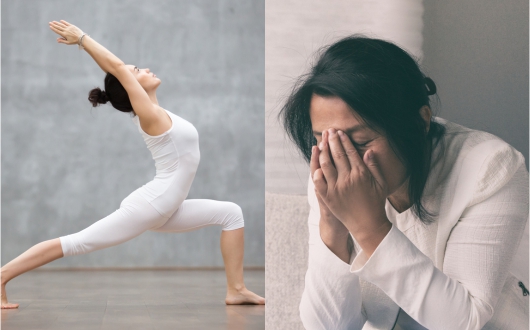
Unfortunately, too much of anything is never good and it is the same with stress. Experiencing too much stress after a certain limit has the opposite effect. It wreaks havoc on your mental, physical, and emotional health. Thus, if you are constantly feeling overwhelmed, then there is a high chance that stress has damaged the nervous system.
All you need to do is recognize the signs and symptoms of this issue and take the necessary steps to minimize its harmful effects. Also. you can inculcate stress relieving yoga into the daily exercise regimen to minimize the stress of daily life.
Firstly, you need to understand how exactly stress affects your daily life.
Your nervous system cannot differentiate between an emotional or physical threat. However, if you are stressed too much over an argument with a friend or a work deadline; the brain activates an emergency system to prepare the body to face a life-or-death situation. Moreover, the longer this emergency system remains activated, the harder it is to shut down later.
That being said, if your body remains in a state of stress then it becomes a major health problem. Stress causes a lot of damage to every system inside your body whether that be the digestive, endocrine, or reproductive. Also, you become susceptible to a heart attack and it speeds up the aging process not to forget also increase the risk of developing anxiety and depression.
You might not be even aware of how deeply stress affects the entire body. Read on to know the different signs and symptoms of too much stress.
1) Inability to concentrate and problems with memory
2) Seeing only the negative in every situation
3) Anxious or racing thoughts
1) Nausea and dizziness
2) Aches and pains
3) Chest Pain
1) Eating too much or too little
2) Withdrawal from others in daily life
3) Using alcohol and drugs for relaxation
1) General unhappiness or depression
2) Feelings of overwhelmed
3) Moodiness and Irritability
You can include calming yoga poses for stress relief to keep the symptoms of stress at bay. Further. yoga helps the brain release feel-good hormones Endorphins and stop the production of the stress-inducing hormone Cortisol.
Apart from this, stress also causes a host of other mental and physical health issues. Let us find out what these are.
Acne is one of the most visible signs of stress in your life. A common tendency of many individuals during stressful situations is they start touching the face. Thus, it spreads bacteria over the skin that leads to acne. Hence, you should start yoga for reducing stress and anxiety to keep both your body and mind healthy in the long run.
Chronic pain and ache also contribute to stress. Stress leads to the release of the stress hormone Cortisol that leads to chronic pain. Moreover, the daily practice of yoga uplifts your spirits and reduces these pains and aches.
You are more likely to suffer from chronic fatigue and decreased energy levels due to stress. Fatigue has a direct relation to the level of stress you experience. It increases sleeplessness and restlessness during bedtime.
A rapid heartbeat and increased heart rate are two major indicators that you are suffering from too much stress in daily life. A study conducted to know the heart rate response during stressful situations concluded the heart rate increased to higher levels during stress. You should include yoga for stress relief and relaxation to control the rapid heartbeat.
A study conducted on individuals with Hyperhidrosis in which there is excessive sweating in the hands concluded that too much stress in daily life also causes excess sweating.
With that said, it is time we look at the major reasons behind stress. Read on to know what exactly is it that causes excess stress in your life.
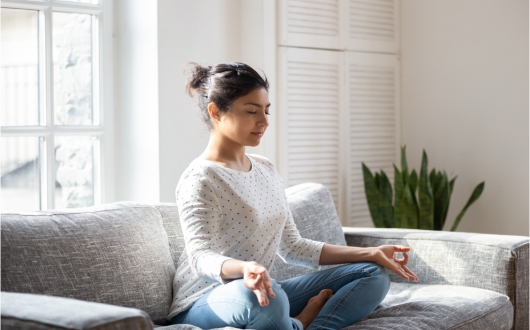
There are certain situations that cause stress, and these factors are known as stressors. The normal viewpoint about stressors is these are negative as a turbulent relationship with loved ones or tiring work schedules. You should understand that anything placing a high demand on your mental and physical well-being is stressful.
Stressful situations can even include positive events as receiving a job promotion or going to a new place. Unfortunately, stress does not always depend on external factors but at times can be self-generated like worrying about an uncertain event, or having a pessimistic approach towards life.
You have to understand that what is stressful for one individual might not be for the other. For example, one employee might break under pressure of workload, the other might thrive working on deadlines.
Let us now look at some of the stressful situations you might come across in everyday life.
Although many workplaces are normal and filled with activity; some are riddled with excess stress when it comes to performance and productivity. It leaves a damaging effect on your physical and emotional health and determines your success or failure. You should include stress relieving yoga to improve overall job satisfaction and minimize stress.

Each of us comes from different walks of life and sometimes deals with financial stress. Whether that stress is due to loss of employment, unplanned expenses, or a combination of both; financial worries are a major cause of stress.
The biggest cause of stress is coping with the loss of a loved one. Pain and stress in such a situation become overwhelming. You undergo a lot of emotional changes such as shock, anger, sadness, and disbelief. Yoga helps you cope with the loss and find new meaning in life.
Loss of a job is a major reason for someone to experience stress. It is completely normal to feel hurt and angry as it shakes your sense of purpose and self-esteem. You should start with yoga for stress relief to become more resilient to life’s challenges and start with a fresh perspective.
Those working in the caregiving profession also face stress, especially when having no control over a particular situation. It takes a toll on mental and physical health, and even relationships. Inculcate regular practice of yoga to help you remain grounded.
Thankfully, there are specific relaxation techniques to help you overcome this issue. It is time we check out the two major techniques to help you find some relief from unnecessary stress.
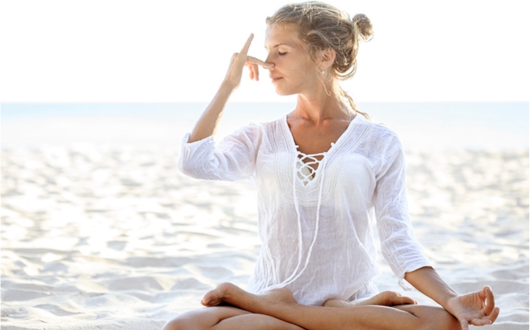
You might not realize but deep breathing is a simple but powerful technique to help you relax. The best part is you can practice it anywhere and anytime to keep stress under control. You can combine deep breathing with aromatherapy or music for maximum benefit. Given below is how you can practice the deep breathing technique for maximum effect.
1) Sit comfortably with a straight back. Put one hand on the chest and the other on the stomach.
2) Now, breathe through the nose and make sure the hands on the stomach rises. The hands-on chest should have minimal movement.
3) Next, exhale through the mouth by pushing out the air while contracting the abdominal muscles. Make sure the hand on your stomach moves as you exhale but the other hand should move a little.
4) Keep breathing in through the nose and out through the mouth. Inhale enough air so the lower abdomen rises and falls.
Progressive muscle relaxation is where you tense and relax the different muscle groups in the body. It provides you a close experience of what tension and complete relaxation feel like for different parts of the body. Read on to know more about practicing this breathing technique.
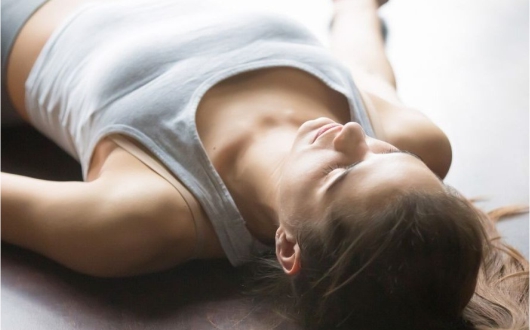
Before you go ahead and follow the guidelines mentioned below, make sure you consult a medical professional especially if you have a history of back problems, muscle spasms, or other serious injuries.
1) Wear loose clothing and take off the shoes to get comfortable
2) Breathe in for few minutes and take deep breaths when breathing out
3) Shift the attention to the right foot and focus on how it feels
4) Now, tense the muscles in the right foot and squeeze as tightly as you can. Hold the position till a count of 10
5) Relax your foot and focus the tension on how the foot becomes loose
6) Remain in the relaxed state for some time, but breathing deeply and slowly
7) Next, shift the attention towards the left foot and follow the same sequence of tensing and releasing the muscle
8) Move slowly up through the body and repeat the process
There is no doubt that stress damages not only your mental and physical well-being but also has an impact on the relationships and your emotional state.
There are specific yoga for stress relief poses to help you stay grounded and calm in a stressful situation.
Although the two breathing techniques mentioned above work wonders when it comes to reducing the level of stress on the body and mind, yoga always wins when it comes to working at the root of the problem.
Let us now find out the different yoga poses that help you find relief from the unnecessary stress in daily life.
The most gentle yoga for stress relief pose you can practice is the Happy Baby Pose. It helps calm down the mind and relieve fatigue and stress. You get a comfortable stretch for the lower back and spine.
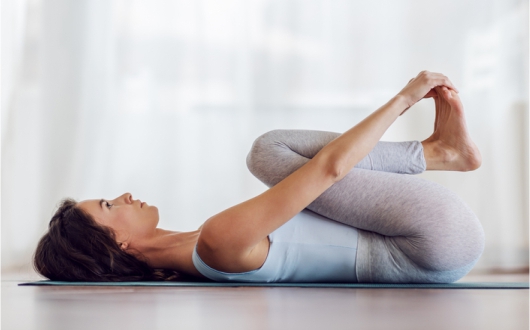
1) Lie comfortably on your back and exhale. Make sure to draw the knees towards the chest.
2) Inhale with both hands on the knees and lower them outwards to the sides.
3) Reach out and grasp the outside of the feet or toes with both hands. In case you have limited flexibility then hold on using a strap or belt looped over the sole of each foot.
4) Keep both ankles over the knees and press your feet up into the hands or strap.
5) Move from one side to the other while taking at least five to seven deep breaths.
If you want to calm down the brain and remove unnecessary stress and tension then Bridge Pose is the perfect option. It helps you fight stress and also works on the thyroid, abdominals, and lungs.
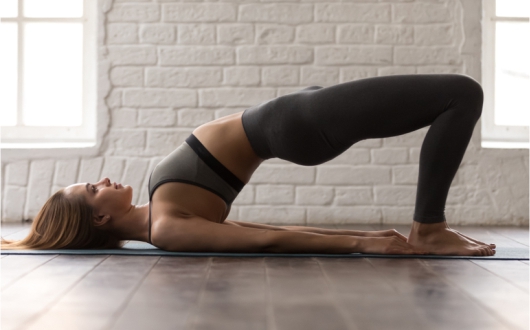
1) Lie comfortably on the floor with both knees up and soles of the feet near the buttocks. You can place a thickly folded towel or blanket under the shoulders to keep the neck safe.
2) While exhaling makes sure to press both feet down onto the floor or mat and raise the hips towards the sky. Engage both thighs and press shoulders down on the mat.
3) Clasp both hands below the hips and move both the shoulder blades to extend both arms.
4) Feel the expansion of the chest and keep the chin tucked in and downwards. Remember not to turn the head to the side.
5) Take at least five to seven long slow breaths before exhaling and rolling down to the mat.
The Easy Pose is a seated pose that helps you remain calm during a stressful situation. It aligns and straightens the back and stretches both ankles and knees.
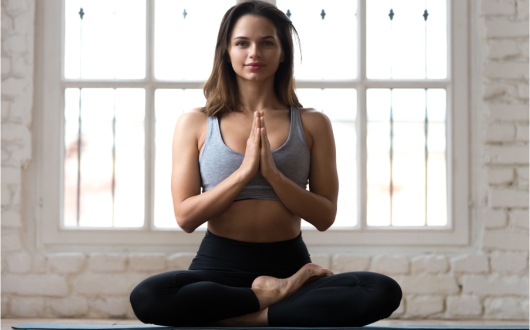
1) Sit comfortably with legs crossed on the floor. You can fold one foot on the floor and tuck in the front of the other.
2) Next, press the sitting bones down on the floor.
3) Elongate the spine and sit up tall while relaxing. Make sure to roll the shoulders downwards to open your chest.
4) Lift the crown of the head towards the sky and close both eyes while breathing deeply for as long as comfortable.
The Easy Pose is an effective yoga technique for stress relief to help you stay calm in everyday life.
Legs Against the Wall is one of the most relaxing yoga for stress relief poses you can practice. It provides your body with much-needed rest, calms down the nervous system, and takes the pressure off the spine and neck.
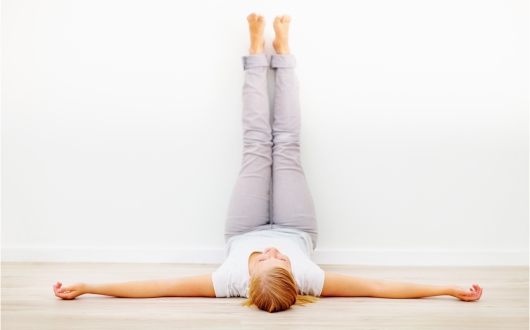
1) Keep the body with knees close to the chest and next to a bare wall free of any obstacles. Moreover, for additional support, you can use a towel or blanket.
2) Exhale in one smooth movement, roll onto the back while swinging the legs against the wall.
3) Make sure to keep both the legs straight and firm while sinking the shoulders and back placed on the floor.
4) Next, draw the head and neck away from the shoulders. Further, extend both arms out to the sides with palms facing upwards.
5) You should maintain the pose between five to ten minutes. Breathe gently and in a relaxed manner.
6) Bend your knees while rolling to the side and off the support.
This yoga for stress relief pose helps you relax your body and mind.
The Child’s Pose is the best yoga exercise for relaxing the neck and back. It minimizes stress, anxiety, and mental tension. Given below is how you can perform this particular asana for maximum impact.
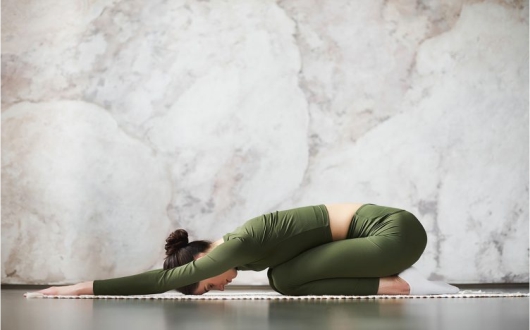
1) Start this yoga pose in an all-fours position.
2) Exhale and sink your hips back towards the heels. You need to reach out the arm along the floor in front of you.
3) Lower your hips as far as the body is comfortable with them.
4) Reach through the arms. Extend the shoulders and bring the forehead to the floor between both hands.
5) Relax completely and release all bodily tension.
6) Lastly, maintain this position and breathe anywhere between 30 seconds to a few minutes.
Stress is one of the major reasons behind a number of mental and physical health issues. Thus. you should include yoga for stress relief into the daily schedule to get rid of the problem. Moreover, it helps you remain calm in tense situations and live a more peaceful and fulfilling life.
Ans) To quickly beat stress, you can listen to music, talk a walk, do any sort of exercise (possibly bodyweight exercises), breathe deeply into your lungs, or go to sleep. These are some quick measures you can take to shake off the stress.
Ans) The best way to get rid of stress is to do regular exercise. For that matter, you can practice yoga for stress. Further, make sure you breathe deep into your belly. Or, ensure you follow a healthy lifestyle that helps you mend your eating habits.
Ans) Healthy eating and living are the two key steps you can take to release stress. Make sure you eat well-balanced, nutritious, and wholesome food. Further, you can include a workout routine into your life to move your body.